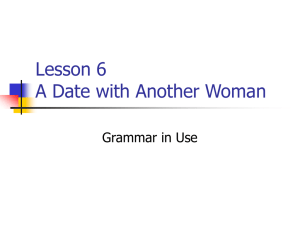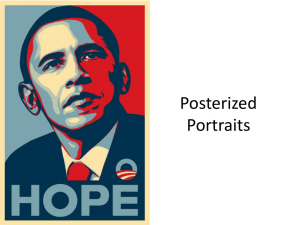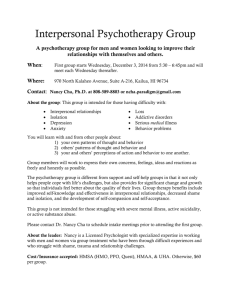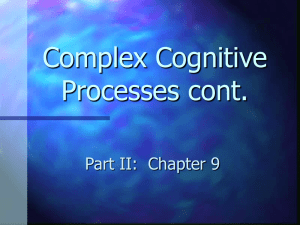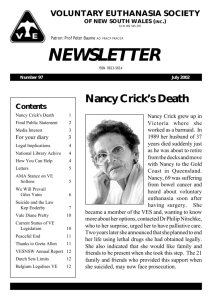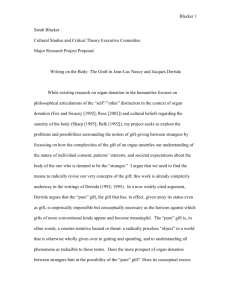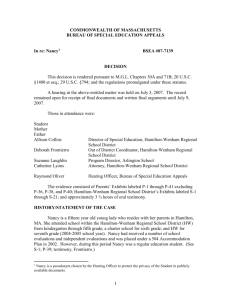Mom`s Fight to Let 12-Year-Old Daughter Die in Peace By Beth
advertisement
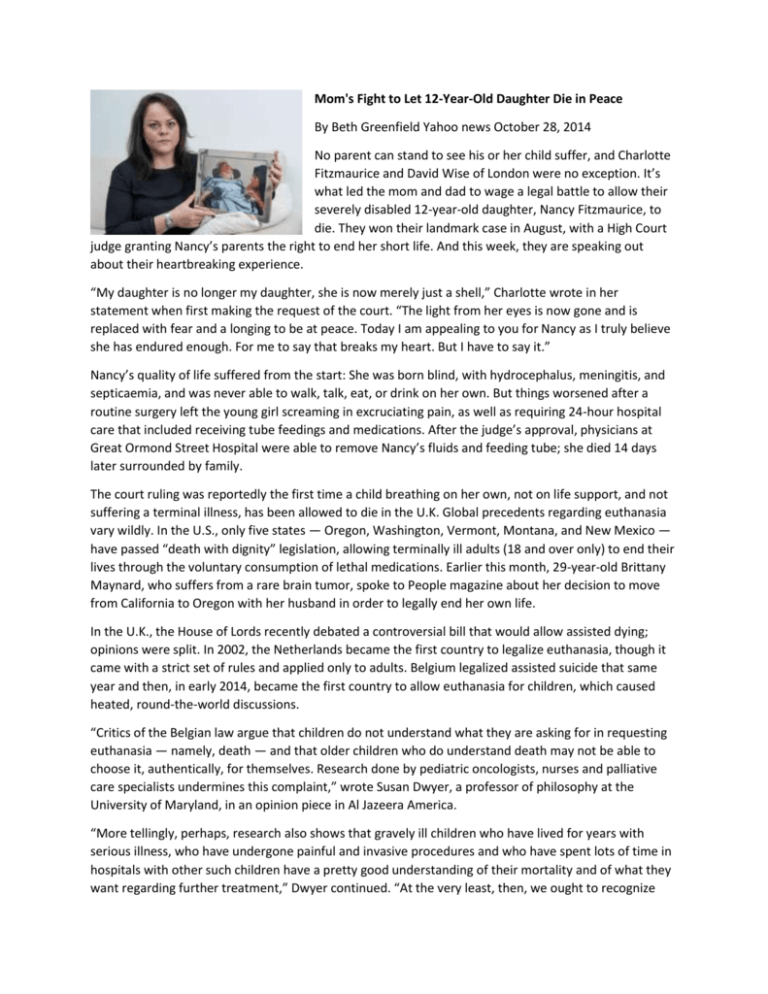
Mom's Fight to Let 12-Year-Old Daughter Die in Peace By Beth Greenfield Yahoo news October 28, 2014 No parent can stand to see his or her child suffer, and Charlotte Fitzmaurice and David Wise of London were no exception. It’s what led the mom and dad to wage a legal battle to allow their severely disabled 12-year-old daughter, Nancy Fitzmaurice, to die. They won their landmark case in August, with a High Court judge granting Nancy’s parents the right to end her short life. And this week, they are speaking out about their heartbreaking experience. “My daughter is no longer my daughter, she is now merely just a shell,” Charlotte wrote in her statement when first making the request of the court. “The light from her eyes is now gone and is replaced with fear and a longing to be at peace. Today I am appealing to you for Nancy as I truly believe she has endured enough. For me to say that breaks my heart. But I have to say it.” Nancy’s quality of life suffered from the start: She was born blind, with hydrocephalus, meningitis, and septicaemia, and was never able to walk, talk, eat, or drink on her own. But things worsened after a routine surgery left the young girl screaming in excruciating pain, as well as requiring 24-hour hospital care that included receiving tube feedings and medications. After the judge’s approval, physicians at Great Ormond Street Hospital were able to remove Nancy’s fluids and feeding tube; she died 14 days later surrounded by family. The court ruling was reportedly the first time a child breathing on her own, not on life support, and not suffering a terminal illness, has been allowed to die in the U.K. Global precedents regarding euthanasia vary wildly. In the U.S., only five states — Oregon, Washington, Vermont, Montana, and New Mexico — have passed “death with dignity” legislation, allowing terminally ill adults (18 and over only) to end their lives through the voluntary consumption of lethal medications. Earlier this month, 29-year-old Brittany Maynard, who suffers from a rare brain tumor, spoke to People magazine about her decision to move from California to Oregon with her husband in order to legally end her own life. In the U.K., the House of Lords recently debated a controversial bill that would allow assisted dying; opinions were split. In 2002, the Netherlands became the first country to legalize euthanasia, though it came with a strict set of rules and applied only to adults. Belgium legalized assisted suicide that same year and then, in early 2014, became the first country to allow euthanasia for children, which caused heated, round-the-world discussions. “Critics of the Belgian law argue that children do not understand what they are asking for in requesting euthanasia — namely, death — and that older children who do understand death may not be able to choose it, authentically, for themselves. Research done by pediatric oncologists, nurses and palliative care specialists undermines this complaint,” wrote Susan Dwyer, a professor of philosophy at the University of Maryland, in an opinion piece in Al Jazeera America. “More tellingly, perhaps, research also shows that gravely ill children who have lived for years with serious illness, who have undergone painful and invasive procedures and who have spent lots of time in hospitals with other such children have a pretty good understanding of their mortality and of what they want regarding further treatment,” Dwyer continued. “At the very least, then, we ought to recognize that terminally ill children might meaningfully refuse treatment that would only prolong their pain and suffering.” In this country, pediatric palliative care guidelines from the American Academy of Pediatrics do not condone physician assisted death. And, according to Raymond Barfield, associate professor of pediatrics and Christian philosophy and director of the Pediatric Quality of Life program at Duke University, “The pediatric palliative care community seems to have a consensus that generally agrees with this, meaning that physicians cannot have the death of a child as a primary motivating goal for action. That said, there seems to be broad consensus that actions intended to relieve pain and suffering in a child are morally acceptable (and many would say laudable) even if the length of a child’s life is shortened as a consequence.” Such pain interventions, Barfield tells Yahoo Parenting, may include high doses of opioids, or the removal of high-technology treatments such as ventilators or feeding tubes, which may shorten life. “As technology advances, interventions that require enormous technological sophistication can tend to become ‘the new normal,’ and this causes huge problems in situations like this where our technology mostly prolongs agony rather than being directed toward human flourishing,” he says. For that reason, Barfield adds, he can see a case like Nancy’s eventually playing out here in the U.S. He also notes that many terminally-ill children are indeed capable of taking part in such wrenching discussions. “Many children who are at the end of life have developed keen insight into their disease and the experience of pain without hope for cure,” he says. “They have also very often seen friends with similar diseases die (this happens all the time in my field of pediatric oncology). Given this, the child should be listened to if they have an opinion about further interventions at the end of life, or about withdrawal of interventions at that point.” In the latest case, though, 12-year-old Nancy was not able to weigh in — which left her parents in a state of agonizing decision-making. “I miss my beautiful girl every day, and although I know it was the right thing to do, I will never forgive myself,” Charlotte said this week. “It shouldn’t have to be a mother’s ­decision to end a child’s life. I believe hospitals and parents should be able to decide without mothers or fathers going to court. I want parents to know it’s OK to want your child to be at peace, it doesn’t mean you love them any less. Watching my daughter suffer for days while they cut off her fluids was unbearable. She went in pain. It will stay with me forever. Although I will live with the guilt forever, I know I have done -everything I can for her and she is at peace.”

